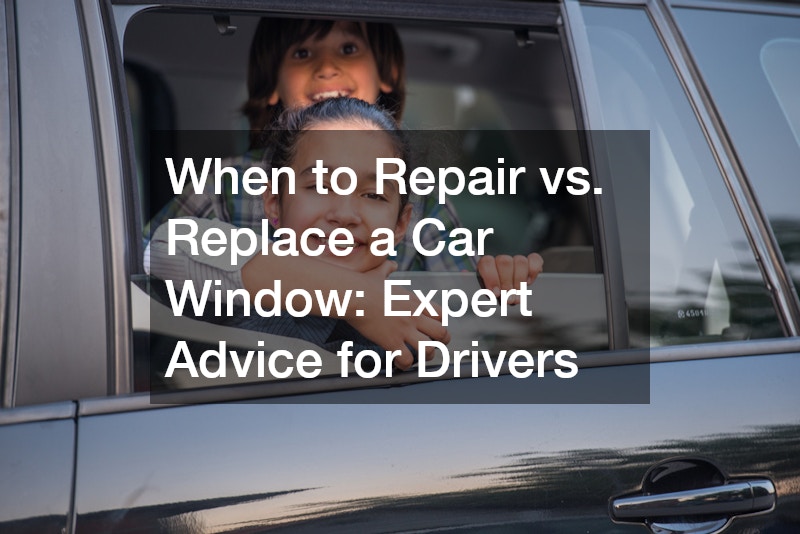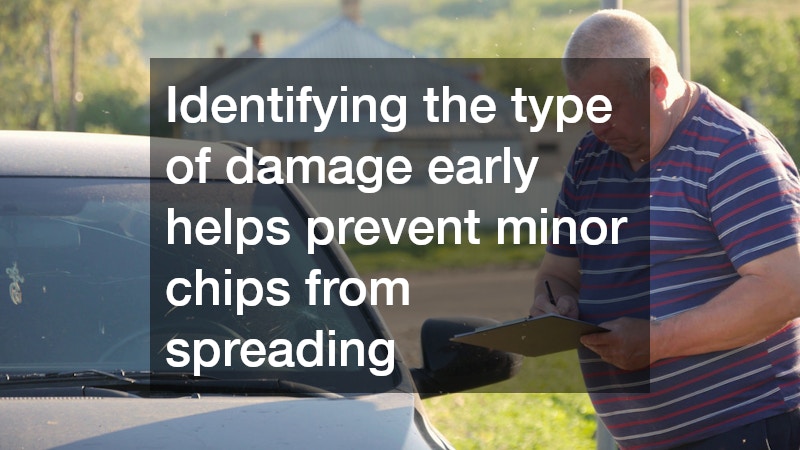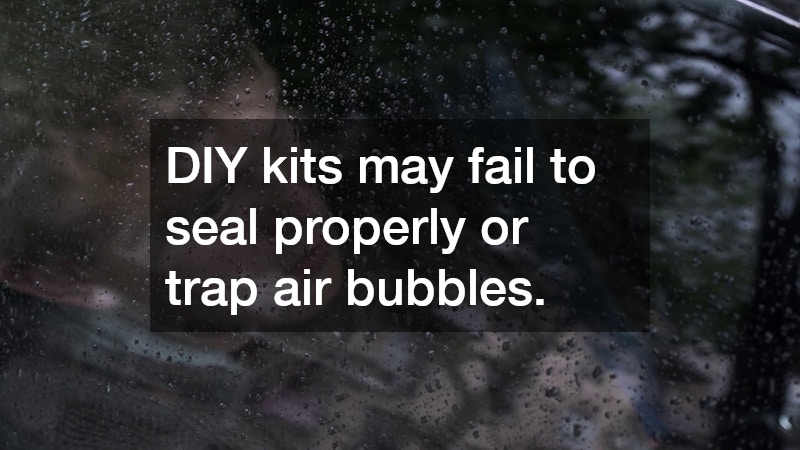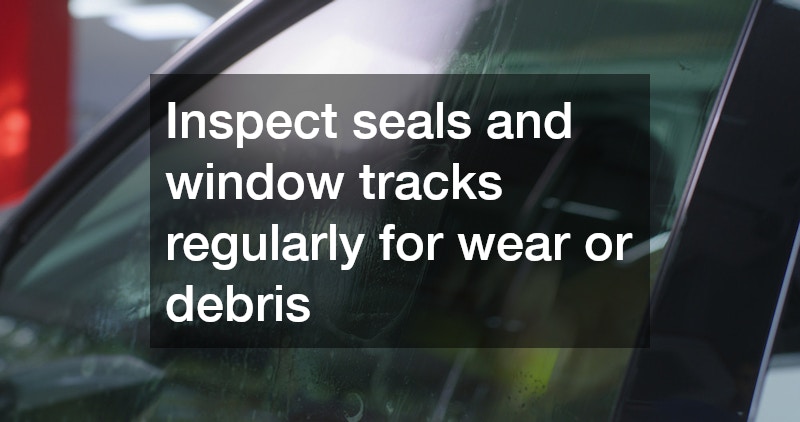When to Repair vs. Replace a Car Window: Expert Advice for Drivers
Key Takeaways
-
Small chips and short cracks may be repaired, but extensive or deep damage always requires replacement.
-
The type of glass (laminated vs. tempered) determines whether repair is possible.
-
Driving with a cracked window reduces visibility and can fail safety inspections.
-
Professional services offer warranties, sensor recalibration, and safe curing times.
-
Quick action prevents minor issues from turning into expensive replacements

Car windows are often taken for granted—until they’re cracked, chipped, or shattered. Whether it’s a small chip from highway debris or a full break caused by vandalism, damaged auto glass isn’t just a cosmetic issue. It directly affects your visibility, comfort, and overall safety.
Knowing when to repair or replace a car window can save you from unnecessary expenses and potential safety risks. Many drivers also wonder how to find a top car window replacement company that can handle their specific make and model correctly, especially when sensors, tinting, or special coatings are involved. This guide explains everything you need to know—from understanding the glass itself to choosing the right repair professionals.
Understanding How Car Windows Are Made
Every type of auto glass serves a purpose. Knowing what kind your vehicle uses helps you decide what type of repair or replacement you need.
Main types of automotive glass:
-
Tempered glass: Found in most side and rear windows, tempered glass is heat-treated to increase strength. When broken, it shatters into small, dull fragments rather than sharp pieces, minimizing injury risk. However, it cannot be repaired; once it cracks or breaks, the entire window must be replaced.
-
Laminated glass: Used for windshields and some luxury side windows, laminated glass has two glass layers with a polyvinyl butyral (PVB) interlayer. This inner layer holds the glass together even when cracked, allowing for repair of small chips or cracks if the damage doesn’t penetrate both layers.
-
Acoustic and solar-coated glass: Many modern vehicles include additional layers for noise reduction and UV protection. This type of glass is more expensive and requires careful handling by trained technicians from top car window replacement companies that understand sensor alignment and coating preservation.
In newer vehicles, the glass may also be integrated with safety sensors, antennas, or heating elements—factors that significantly influence repair methods and replacement costs.
Common Types of Car Window Damage
Auto glass damage comes in many forms. Identifying the type of damage early helps prevent minor chips from spreading into full cracks that demand complete replacement.
The most common types of car window damage include:
-
Rock chips: Small surface chips caused by gravel or road debris. They’re circular or star-shaped and usually repairable if less than one inch wide.
-
Cracks: Straight-line or branching damage that can expand due to temperature changes, humidity, or vibration. Cracks longer than 6 to 12 inches typically require replacement.
-
Combination breaks: A mix of chips and cracks caused by strong impacts. Often requires full window replacement, depending on location and severity.
-
Shattered glass: Complete breakage, often due to vandalism, accidents, or extreme force. Tempered glass shatters entirely, while laminated glass may remain intact but must still be replaced.
-
Surface scratches and pitting: Over time, wiper blades, sand, or debris can leave fine scratches that scatter light and reduce visibility, especially at night.
Professional glass technicians inspect each damage type to determine whether structural integrity is compromised, which helps guide the repair or replacement decision.

How to Decide Between Repair and Replacement
Several key factors help determine whether your damaged window can be repaired or must be replaced.
1. Size and Depth of Damage
-
Chips smaller than a coin (typically less than one inch across) are often repairable.
-
Cracks deeper than the outer glass layer or longer than 6–12 inches generally require replacement.
-
If the impact penetrates both layers of laminated glass, a full replacement is the only safe option.
2. Location of Damage
-
Damage directly in the driver’s line of sight can distort vision, even after repair—replacement is safer.
-
Cracks near window edges weaken the glass structure, increasing the risk of spreading.
3. Type of Glass
-
Laminated glass can be repaired under specific conditions, while tempered glass cannot be.
-
Side and rear windows made of tempered glass always require replacement if cracked or shattered.
4. Structural Integrity
-
If the damage affects the window’s ability to stay sealed, hold shape, or support the car’s structure during an accident, it must be replaced.
5. Safety and Legal Considerations
-
Driving with a cracked window reduces crash resistance and may fail safety inspections.
-
Many regions prohibit driving with visible cracks that obstruct the driver’s view.
When Repair Is the Better Option
Repairing a window can be a smart choice if the damage is minor and doesn’t affect safety or visibility. Many of the best auto glass repair and replacement services now use advanced resins that restore nearly full strength to chipped areas.
Repair is suitable when:
-
The chip is small, round, and shallow.
-
The damage doesn’t extend to the inner glass layer.
-
The crack is under 6 inches and not near the glass edge.
-
The window is laminated rather than tempered.
Benefits of choosing repair:
-
Affordable: Most repairs cost between $50 and $120.
-
Fast: Repairs usually take 30–60 minutes and can often be done at your location.
-
Environmentally responsible: Keeps old glass out of landfills.
-
Preserves factory seal: The original installation remains intact, avoiding the risk of leaks.
Professional repair process:
-
The technician cleans and inspects the damaged area.
-
Air and moisture are removed using vacuum tools.
-
Special resin is injected into the damaged zone.
-
UV light cures the resin, bonding and strengthening the glass.
-
The surface is polished for clarity and smoothness.
What to avoid:
-
DIY kits may fail to seal properly or trap air bubbles.
-
Delaying repair can allow moisture inside, weakening the bond.
Drivers who contact the top car window replacement companies early often save money by getting small chips repaired before they worsen.

When Replacement Is the Only Safe Choice
If damage compromises safety, visibility, or structure, replacement is mandatory.
Replacement is required when:
-
The window is completely shattered or missing.
-
Cracks extend to the edges or across the driver’s view.
-
The damage penetrates both glass layers.
-
There are multiple chips close together or one large area of impact.
-
The glass has integrated sensors or heating elements that were damaged.
Why timely replacement matters:
-
Prevents water leaks, rust, and electrical issues.
-
Restores structural rigidity to the vehicle frame.
-
Ensures airbag systems function correctly during collisions.
-
Avoids distortion or glare that can cause accidents.
Typical replacement process:
-
The damaged window and surrounding trim are carefully removed.
-
The frame is cleaned, and any corrosion or debris is cleared.
-
OEM or high-quality aftermarket glass is installed using manufacturer-approved adhesives.
-
Adhesive curing time is observed—usually 1–2 hours for safety.
-
Sensors, defrost lines, and tint coatings are tested before completion.
Many of the top car window replacement companies provide mobile services, bringing certified technicians to your location and ensuring proper curing time before driving.
Comparing the Cost of Repair vs. Replacement
The cost difference between repair and replacement can be significant. Understanding the range helps you budget realistically and decide whether to file an insurance claim.
Average cost breakdown:
-
Chip repair: $50–$120
-
Side window replacement: $150–$400
-
Rear window replacement: $200–$500
-
Windshield replacement: $250–$1,000 or more for advanced models
Factors affecting pricing:
-
Type of glass: OEM (Original Equipment Manufacturer) glass costs more but ensures perfect fit and durability. Aftermarket glass is more affordable but can vary in clarity and thickness.
-
Vehicle model: Luxury and electric vehicles often use specialized, high-cost glass with sensors.
-
Technology integration: ADAS recalibration for lane assist or rain sensors can add $150–$400 to total cost.
-
Labor rates: Costs differ between dealership service centers, independent shops, and mobile technicians.
Insurance considerations:
-
Comprehensive coverage often includes glass repair or replacement.
-
Some policies waive deductibles for small repairs but not for full replacements.
-
Filing early prevents damage from worsening and keeps claims simple.
When comparing quotes, drivers should always research and read reviews to find the top car window replacement companies offering fair pricing, transparent warranties, and certified technicians.

Professional vs. DIY: Which Approach Works Best?
While DIY kits are marketed as convenient, they rarely achieve professional-grade strength or clarity.
DIY kits:
-
Good for temporary repairs on small chips.
-
Prone to air bubbles and uneven curing.
-
Often lack high-quality resin used by professionals.
-
Can make future repairs or replacements more difficult.
Professional services:
-
Use calibrated vacuum tools and UV-curing systems.
-
Provide lifetime warranties on workmanship and glass.
-
Handle ADAS recalibration and defrost system testing.
-
Offer mobile service vans for home or workplace appointments.
Top-rated car window replacement specialists also verify proper adhesive curing time—critical for safety in collisions. DIY fixes may seem cost-effective, but incorrect sealing can lead to leaks, reduced visibility, and potential glass detachment during impact.
Preventing Future Car Window Damage
Preventive care goes a long way in extending the life of your car’s glass and avoiding costly replacements.
Driving habits that help:
-
Keep a safe following distance from gravel trucks and construction vehicles.
-
Avoid sudden temperature shocks (like blasting heat on a frozen windshield).
-
Drive cautiously on rough or unpaved roads.
Parking precautions:
-
Park in covered areas or shaded spots to prevent thermal stress on glass.
-
Avoid parking under trees or in areas prone to falling debris.
-
Use windshield shades to protect from UV damage and heat expansion.
Maintenance tips:
-
Inspect seals and window tracks regularly for wear or debris.
-
Replace wiper blades at least once a year.
-
Clean with ammonia-free glass cleaners to prevent film buildup.
-
Apply protective window films to reinforce glass strength and block UV rays.
-
Schedule immediate inspection for even minor chips or cracks.
Many top car window replacement companies also offer preventive treatments like hydrophobic coatings, which repel water and reduce the risk of micro-cracks from dirt impact.
Choosing a Trusted Car Window Replacement Company
The quality of workmanship matters as much as the glass itself. Choosing the right professionals ensures your window performs safely under all conditions.
Qualities to look for:
-
Certified technicians trained in AGRSS (Auto Glass Safety Council) standards.
-
Experience with your car’s brand, especially if it includes ADAS features.
-
Availability of both OEM and premium aftermarket options.
-
Transparent pricing and written warranties on materials and labor.
-
Mobile or emergency replacement services for added convenience.
Questions to ask before booking:
-
Do you recalibrate sensors after replacement?
-
How long before the vehicle is safe to drive again?
-
Is the glass OEM or aftermarket, and what’s the warranty difference?
-
Are there additional fees for tinting or heating elements?
Researching customer reviews, ratings, and certifications helps you identify the top car window replacement companies in your area. Look for businesses that consistently earn positive feedback for professionalism, cleanliness, and fast turnaround times.
Making the Right Choice for Your Safety and Budget
Deciding between repair and replacement depends on the type, size, and location of the damage—but safety should always come first. Small, shallow chips can often be repaired quickly and affordably, while cracks that spread, obstruct vision, or compromise structure demand full replacement.
Choosing one of the top car window replacement companies ensures proper installation, long-lasting materials, and safe curing of adhesives that protect your vehicle during collisions. Acting early saves you from higher costs, failed inspections, and potential safety risks on the road.